Java刷题篇——单链表练习题上
发布时间:2023年12月18日
206. 反转链表 - 力扣(LeetCode)
1. 题目描述
给你单链表的头节点 head ,请你反转链表,并返回反转后的链表。
示例1
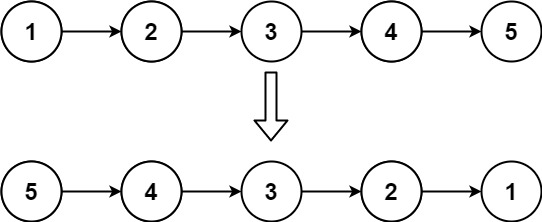
输入:head = [1,2,3,4,5]
输出:[5,4,3,2,1]
示例2
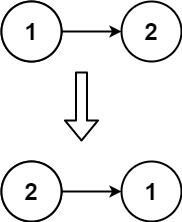
输入:head = [1,2]
输出:[2,1]
示例3
输入:head = [ ]
输出:[ ]
提示
- 链表中节点的数目范围是
[0,500] -5000 <= Node.val <= 5000
2. 思路
-
判断链表是否为空,如果为空直接返回头结点
-
判断链表是否为一个元素,如果是直接返回头结点
-
将
head置为null -
定义两个指针,
cur和curNext,cur指向头结点的next,表示要反转的元素;curNext指向cur的next,表示要反转元素的下一个元素 -
使用头插法将要反转的元素插入前一个元素的前面
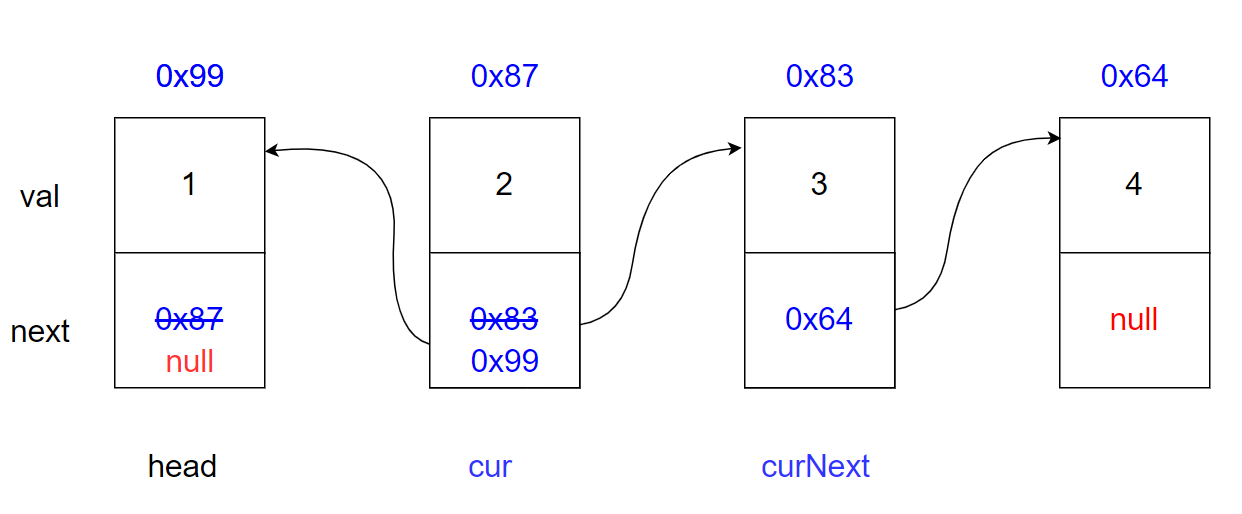
3.代码
/**
* Definition for singly-linked list.
* public class ListNode {
* int val;
* ListNode next;
* ListNode() {}
* ListNode(int val) { this.val = val; }
* ListNode(int val, ListNode next) { this.val = val; this.next = next; }
* }
*/
class Solution {
public ListNode reverseList(ListNode head) {
if (head == null) { // 链表里一个元素都没有
return head;
}
if (head.next == null) { // 链表里只有一个元素
return head;
}
ListNode cur = head.next; // 要反转的元素
head.next = null;
while (cur != null) {
ListNode curNext = cur.next;
// 头插法
cur.next = head;
head = cur;
cur = curNext;
}
return head;
}
}
运行结果:
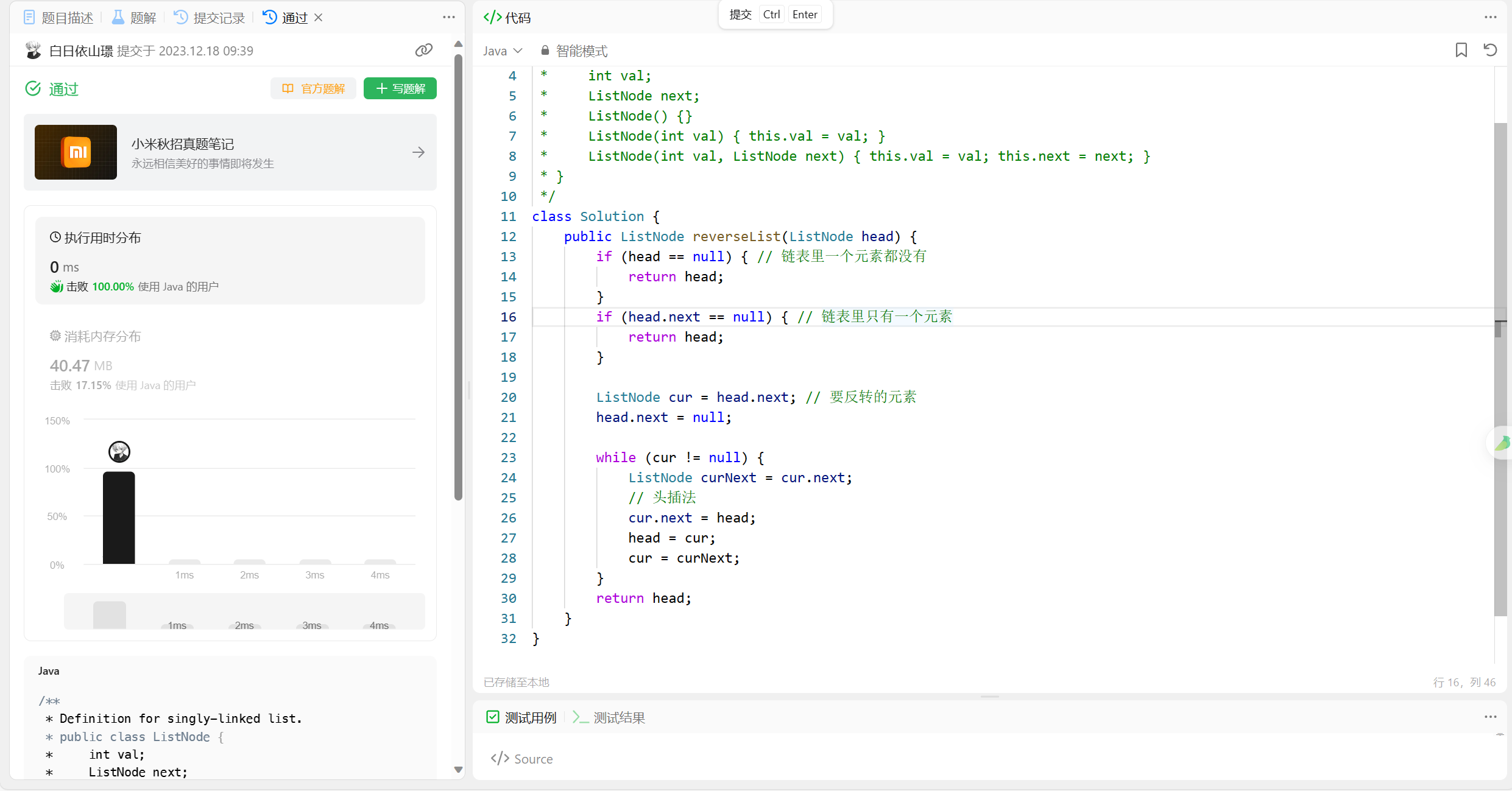
876. 链表的中间结点 - 力扣(LeetCode)
1.题目描述
给你单链表的头结点 head ,请你找出并返回链表的中间结点。
如果有两个中间结点,则返回第二个中间结点。
示例1

输入:head = [1,2,3,4,5]
输出:[3,4,5]
解释:链表只有一个中间节点,值为3
示例2

输入:head = [1,2,3,4,5,6]
输出:[4,5,6]
解释:链表只有两个中间节点,值分别为3和4,返回第二个节点。
提示
- 链表的节点的范围是
[1,100] 1<= Node.val <= 100
2. 思路
- 判断头结点的
next是否为空,如果是直接返回头结点 - 定义两个指针
slow和fast,都指向头结点。 - 循环遍历链表,每次
fast指向fast的next的next(每次移动两步);slow指向slow的next(每次移动1步) - 循环条件:
fast == null循环结束(链表元素个数为偶数时),fast.next == null循环结束(链表元素个数为奇数时)。
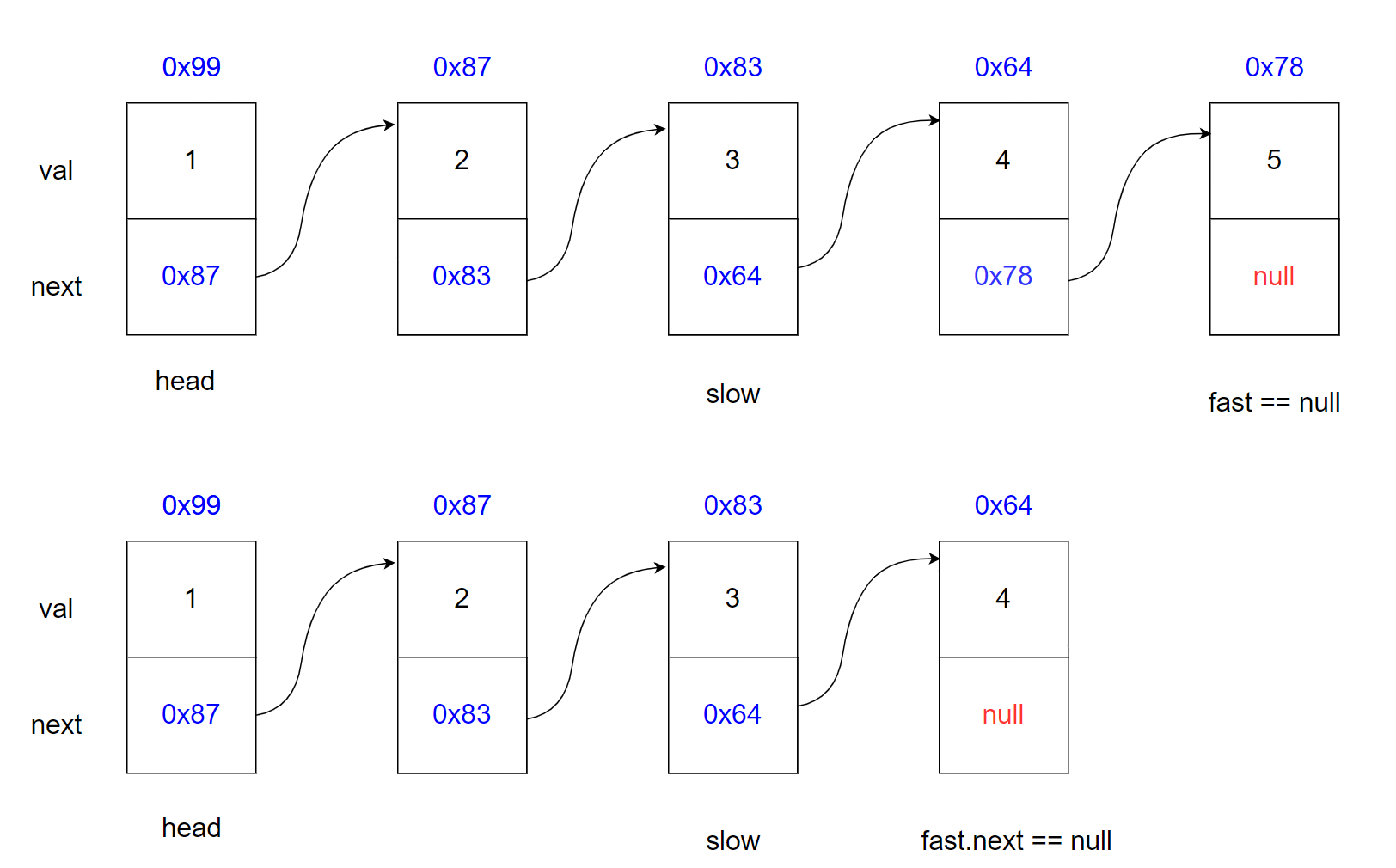
3.代码
/**
* Definition for singly-linked list.
* public class ListNode {
* int val;
* ListNode next;
* ListNode() {}
* ListNode(int val) { this.val = val; }
* ListNode(int val, ListNode next) { this.val = val; this.next = next; }
* }
*/
class Solution {
public ListNode middleNode(ListNode head) {
if (head.next == null) {
return head;
}
ListNode slow = head;
ListNode fast = head;
while (fast != null && fast.next != null) {
fast = fast.next.next;
slow = slow.next;
}
return slow;
}
}
运行结果:
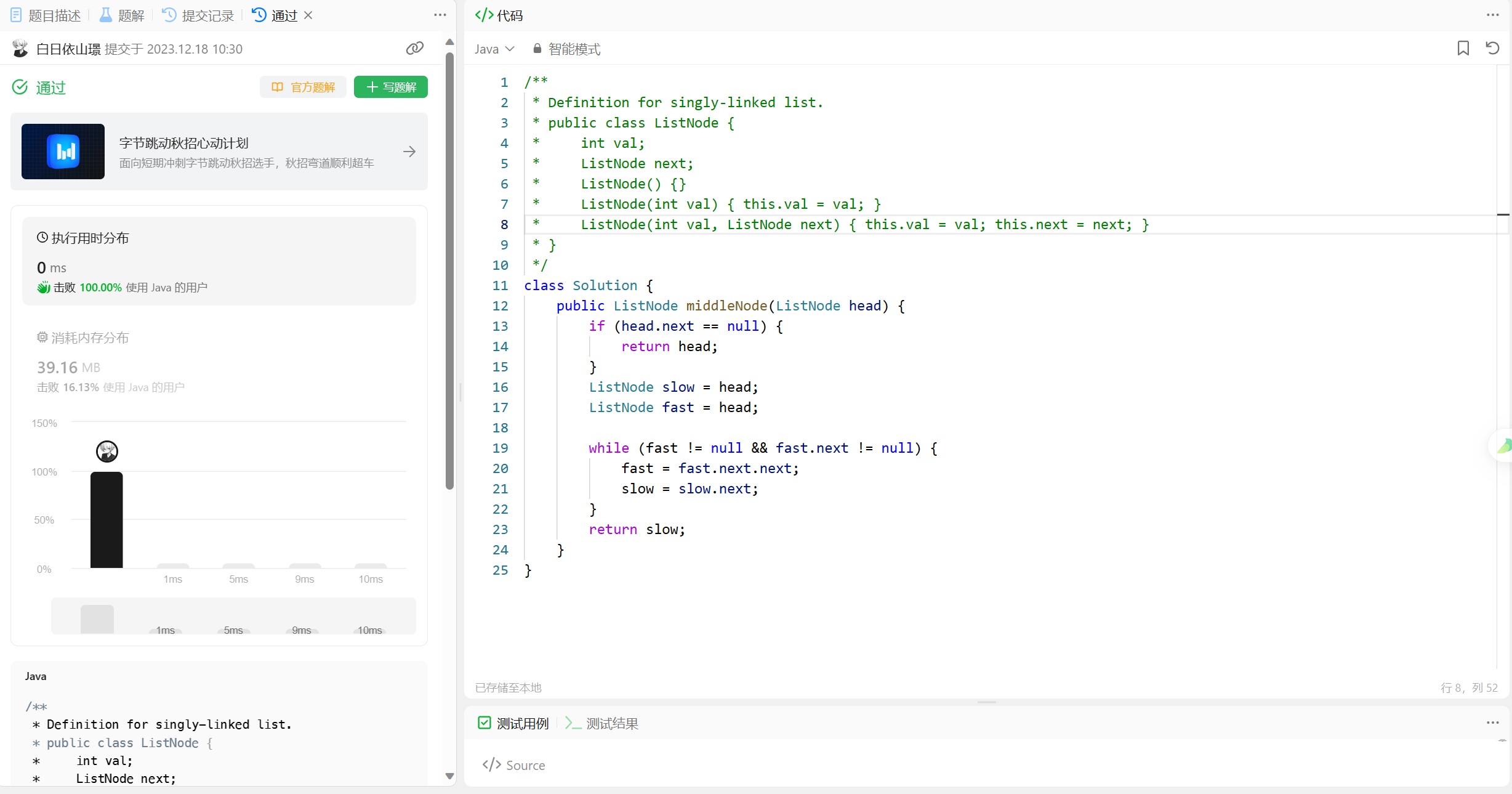
链表中倒数第k个结点
1. 题目描述
输入一个链表,输出该链表中倒数第k个结点。
示例1
输入:1,{1,2,3,4,5}
返回值:{5}
2. 思路
- 判断
k是否合法,如果不合法直接返回null。 - 判断链表是否为空,如果为空直接返回
null。 - 定义两个指针
fast和slow都是指向头结点。 - 让
fast先走k-1步。 - 在让
fast和slow同时走,当fast.next == null都走到了链表最后一个节点了,同时slow也走到了倒数第K个节点
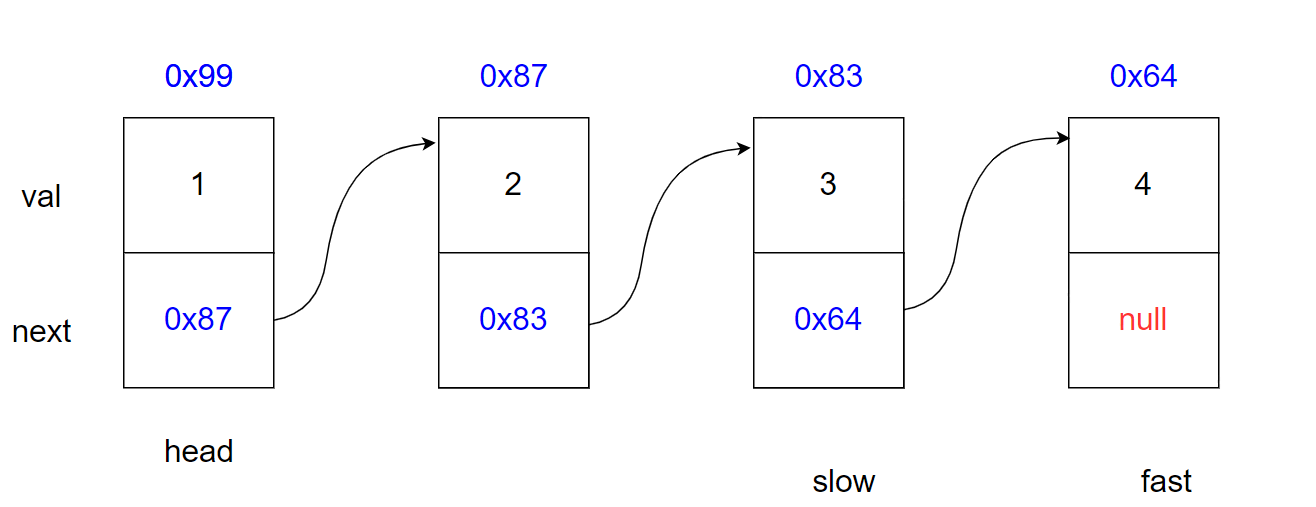
3.代码
import java.util.*;
/*
public class ListNode {
int val;
ListNode next = null;
ListNode(int val) {
this.val = val;
}
}*/
public class Solution {
public ListNode FindKthToTail(ListNode head, int k) {
if (k < 0) { // k为负数
return null;
}
if (head == null){
return null;
}
ListNode fast = head;
ListNode slow = head;
int count = 0;
while (count != (k - 1)) {
if (fast.next != null) {
fast = fast.next;
count++;
} else { // k 大于链表长度
return null;
}
}
while (fast.next != null) {
fast = fast.next;
slow = slow.next;
}
return slow;
}
}
运行结果:

21. 合并两个有序链表 - 力扣(LeetCode)
1. 题目描述
将两个升序链表合并为一个新的 升序 链表并返回。新链表是通过拼接给定的两个链表的所有节点组成的。
示例1
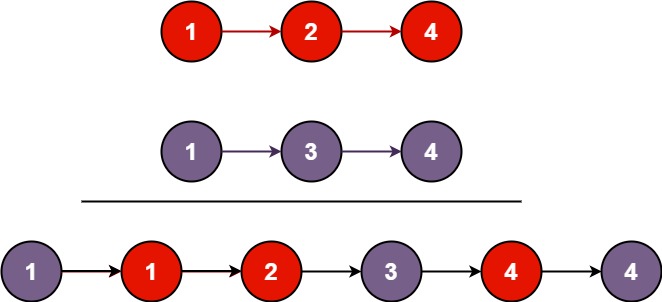
输入:l1 = [1,2,4] ,l2 = [1,3,4]
输出:[1,1,2,3,4,4]
示例2
输入:l1 = [] ,l2 = []
输出:[]
示例3
输入:l1 = [] ,l2 = [0]
输出:[0]
2.思路
- 创建一个节点
newHead为虚拟节点 - 开始比较链表的大小,谁大
newHead就指向谁,头结点就指向头结点的next - 判断链表是否为空,为空则
newHead指向头结点的next
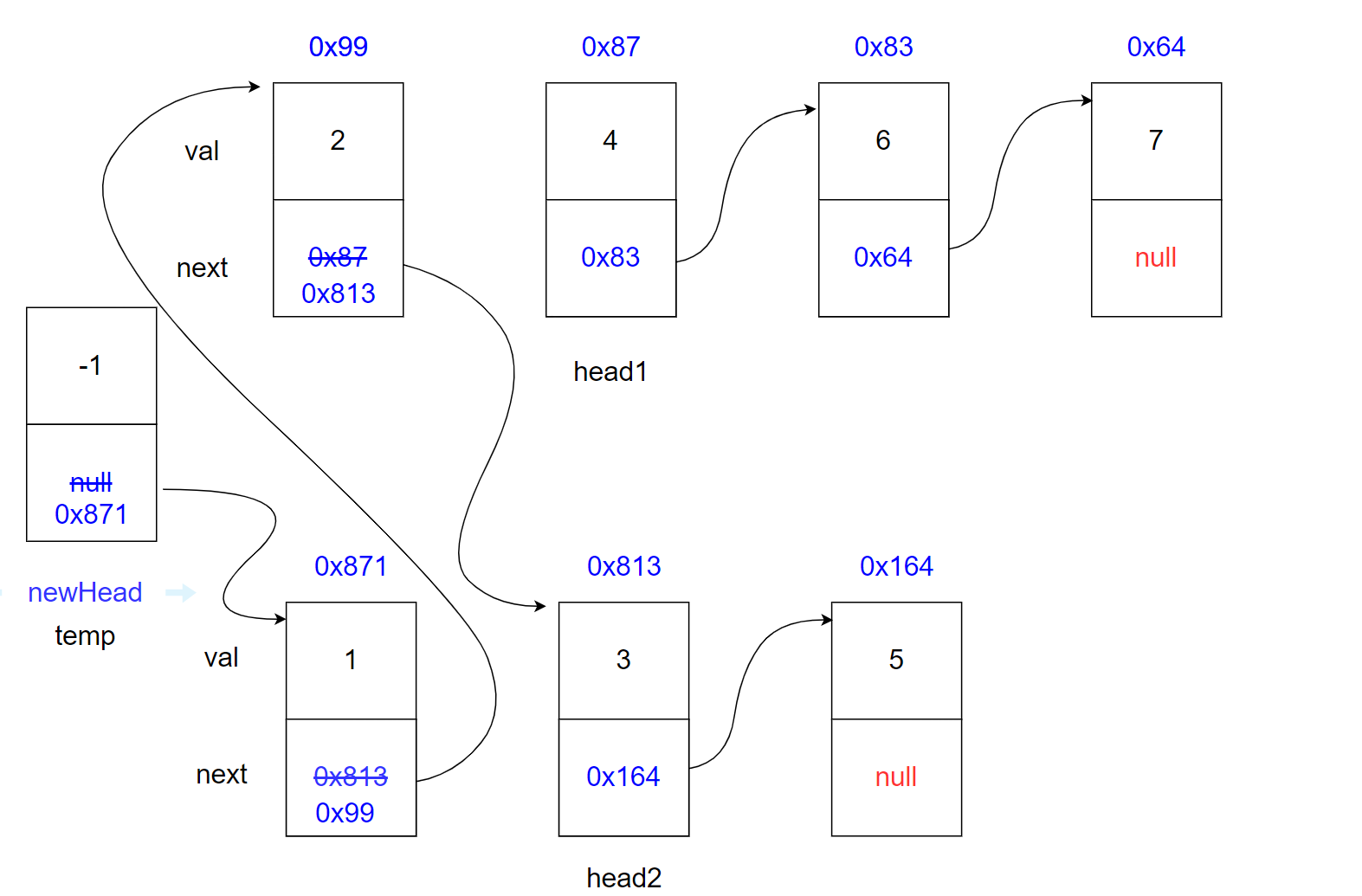
3. 代码
/**
* Definition for singly-linked list.
* public class ListNode {
* int val;
* ListNode next;
* ListNode() {}
* ListNode(int val) { this.val = val; }
* ListNode(int val, ListNode next) { this.val = val; this.next = next; }
* }
*/
class Solution {
public ListNode mergeTwoLists(ListNode list1, ListNode list2) {
ListNode newHead = new ListNode(-1);
ListNode temp = newHead;
while(list1 != null && list2 != null) {
if (list1.val < list2.val) {
temp.next = list1;
list1 = list1.next;
temp = temp.next;
} else {
temp.next = list2;
list2 = list2.next;
temp = temp.next;
}
}
if (list1 != null) {
temp.next = list1;
}
if (list2 != null) {
temp.next = list2;
}
return newHead.next;
}
}
运行结果:
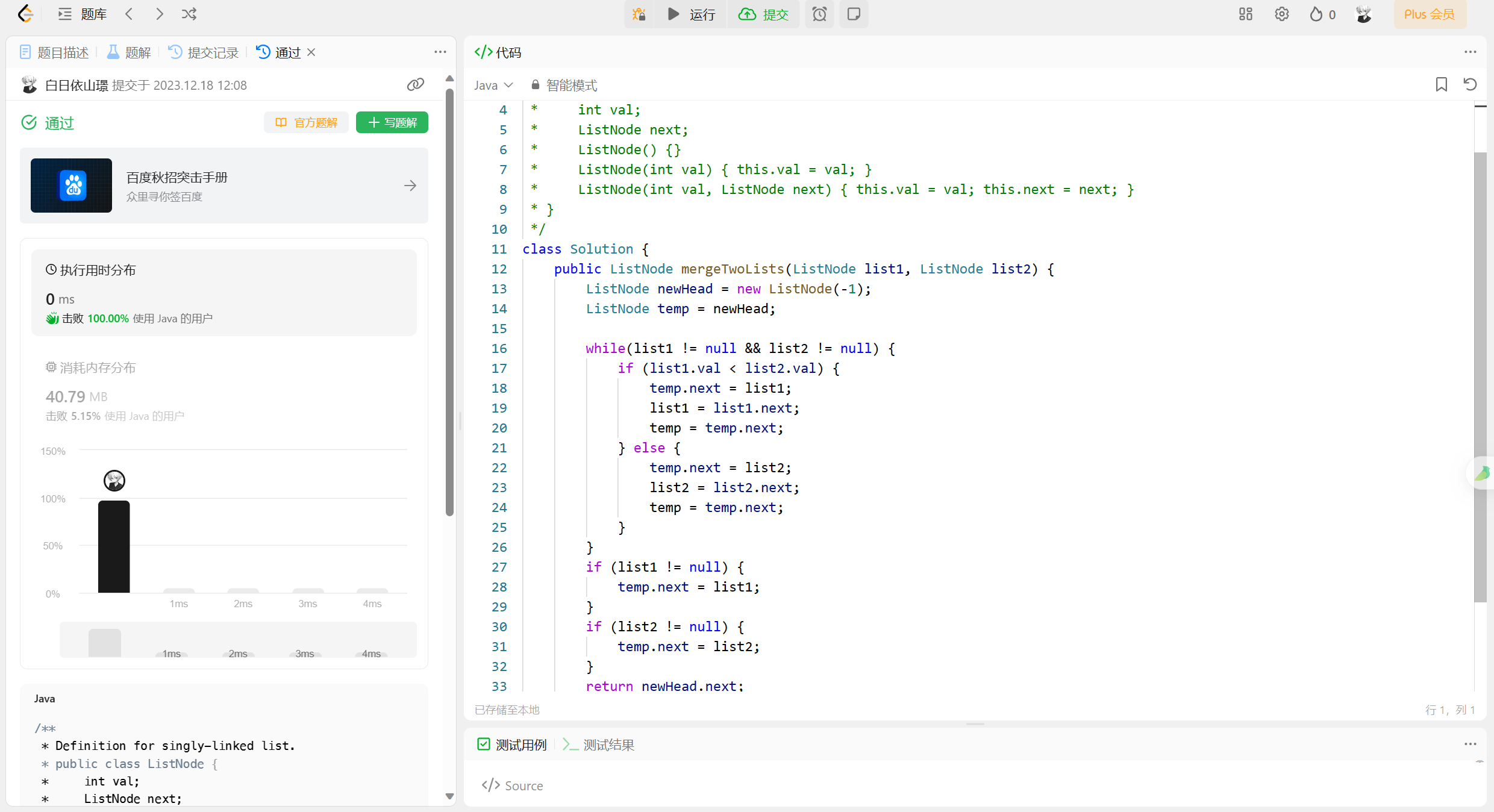
文章来源:https://blog.csdn.net/2301_79076048/article/details/135059533
本文来自互联网用户投稿,该文观点仅代表作者本人,不代表本站立场。本站仅提供信息存储空间服务,不拥有所有权,不承担相关法律责任。 如若内容造成侵权/违法违规/事实不符,请联系我的编程经验分享网邮箱:chenni525@qq.com进行投诉反馈,一经查实,立即删除!
本文来自互联网用户投稿,该文观点仅代表作者本人,不代表本站立场。本站仅提供信息存储空间服务,不拥有所有权,不承担相关法律责任。 如若内容造成侵权/违法违规/事实不符,请联系我的编程经验分享网邮箱:chenni525@qq.com进行投诉反馈,一经查实,立即删除!
最新文章
- Python教程
- 深入理解 MySQL 中的 HAVING 关键字和聚合函数
- Qt之QChar编码(1)
- MyBatis入门基础篇
- 用Python脚本实现FFmpeg批量转换
- js中分号产生的问题详解,第一次出现分号导致的问题的记录
- 【React】常见疑问的整理
- springboot 共享自习室座位管理系统 -计算机毕业设计源码55732
- leetcode 18 四数之和
- 某联合产权交易所持续购买监控易产品的维保服务,提升IT运维保障能力
- 视觉设计必备!这6款工具让你事半功倍!
- 清理优化,卸载高效——PP Cleaner & Uninstaller Pro for Mac
- 备战2个月,面试被问麻了....
- python实现控制台(终端)打印捕获和日志存储
- 啊哈c语言——3.7逻辑挑战3:我要排序